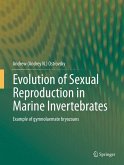Jellyfish are one of the most conspicuous animals in our oceans and are renowned for their propensity to form spectacular blooms. The unique features of the biology and ecology of jellyfish that enable them to bloom also make them successful invasive species and, in a few places around the world, jellyfish have become problematic. As man increasingly populates the world's coastlines, interactions between humans and jellyfish are rising, often to the detriment of coastal-based industries such as tourism, fishing and power generation. However we must not lose sight of the fact that jellyfish have been forming blooms in the oceans for at least 500 million years, and are an essential component of normal, healthy ocean ecosystems. Here many of the world's leading jellyfish experts explore the science behind jellyfish blooms. We examine the unique features of jellyfish biology and ecology that cause populations to 'bloom and bust', and, using case studies, we show why jellyfish are important to coastal and ocean ecosystem function. We outline strategies coastal managers can use to mitigate the effects of blooms on coastal industries thereby enabling humans to coexist with these fascinating creatures. Finally we highlight how jellyfish benefit society; providing us with food and one of the most biomedically-important compounds discovered in the 20th century.








